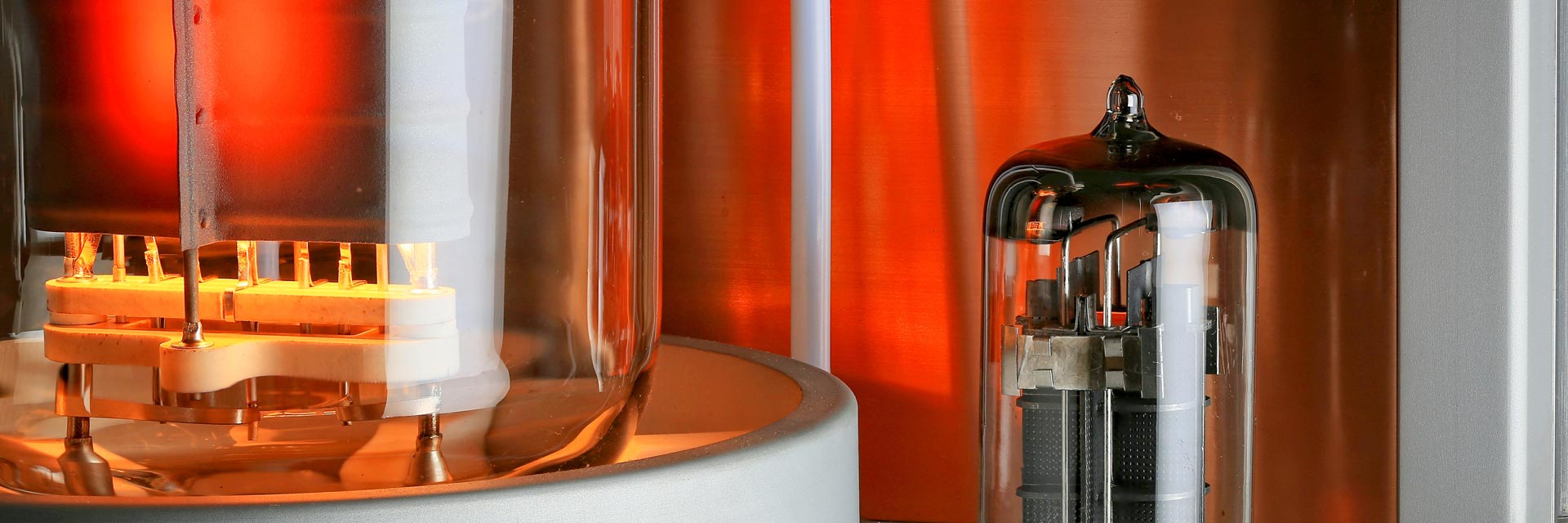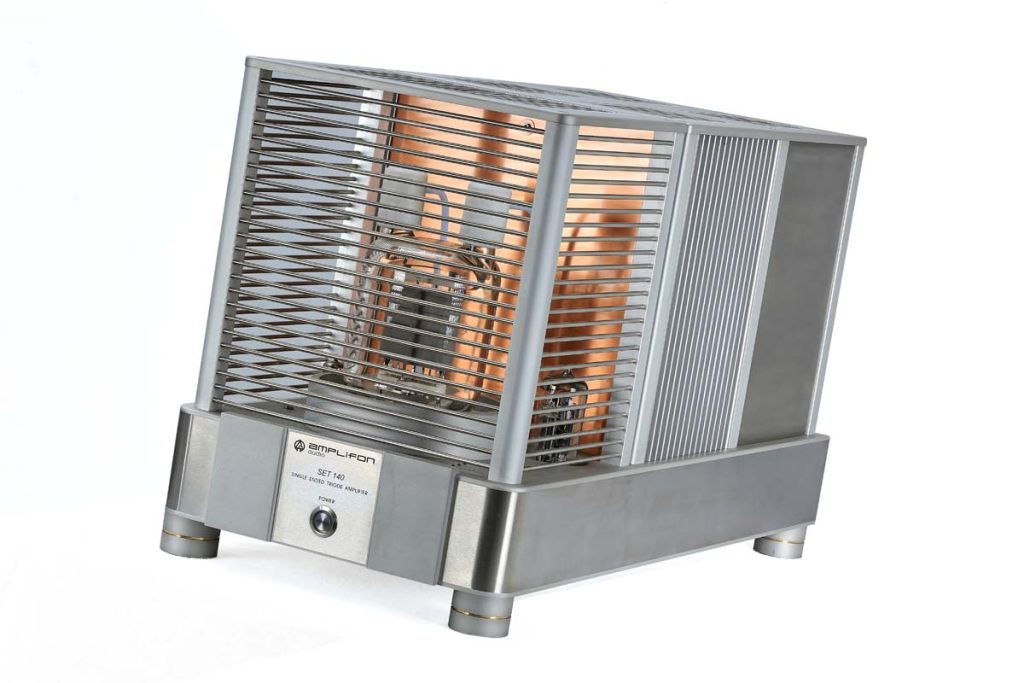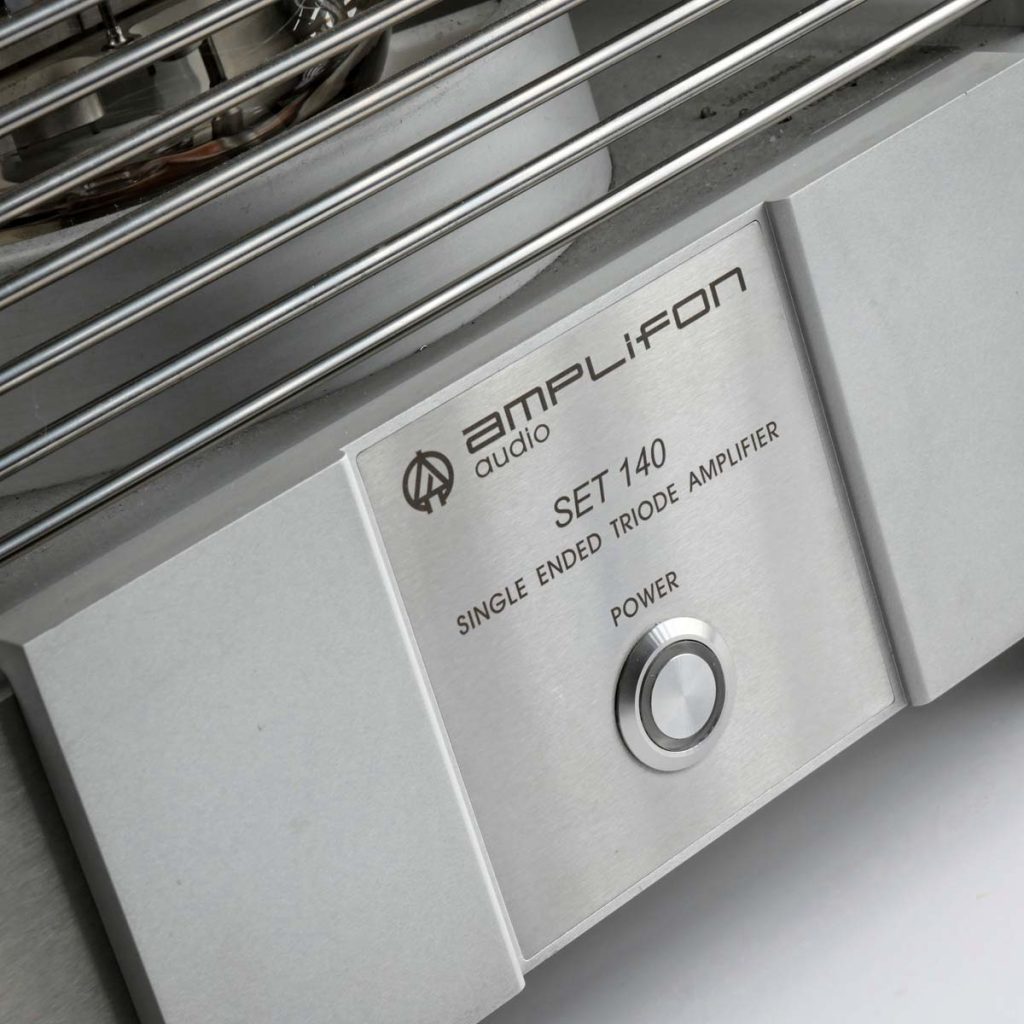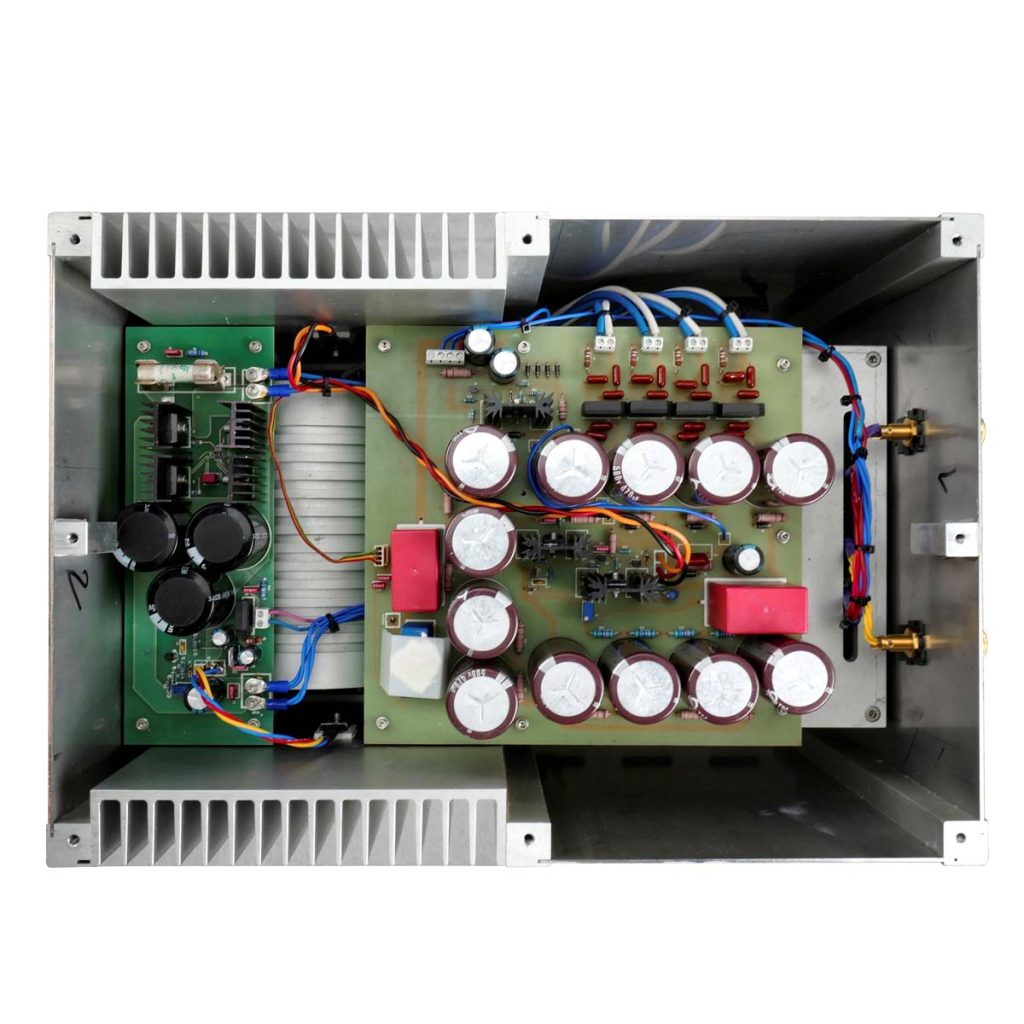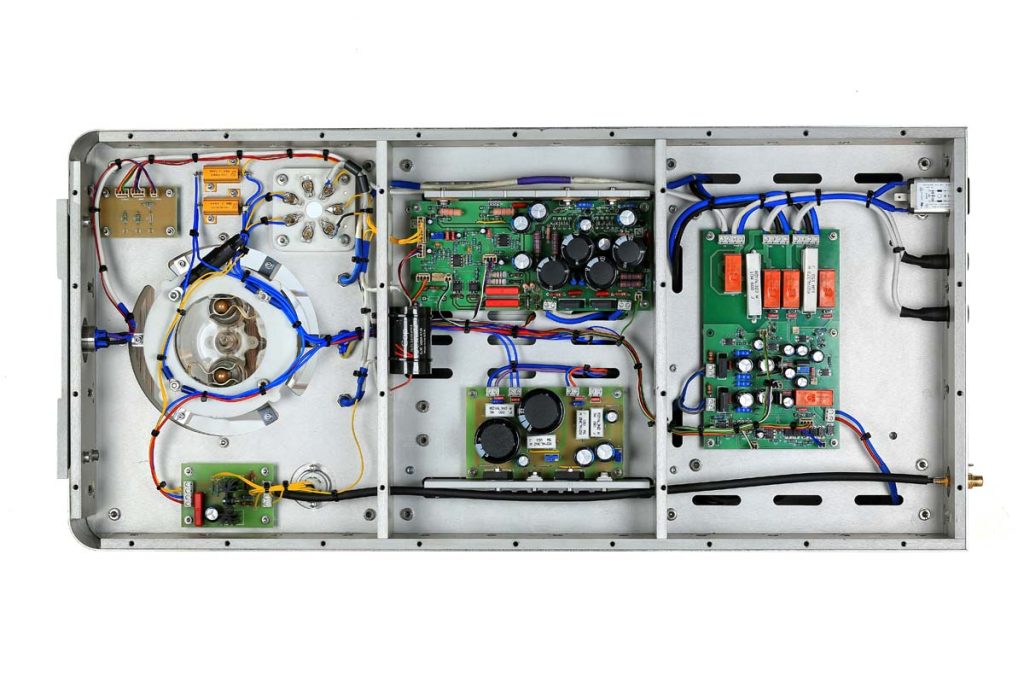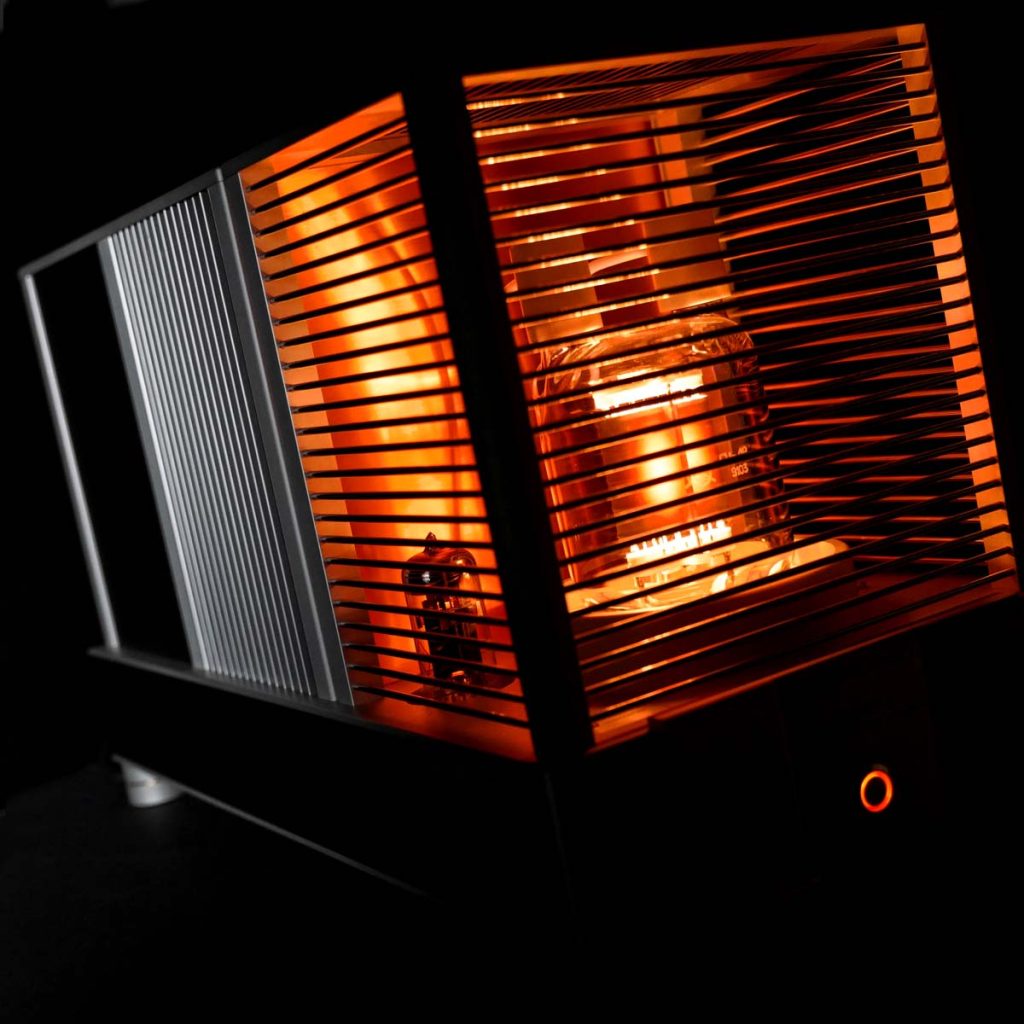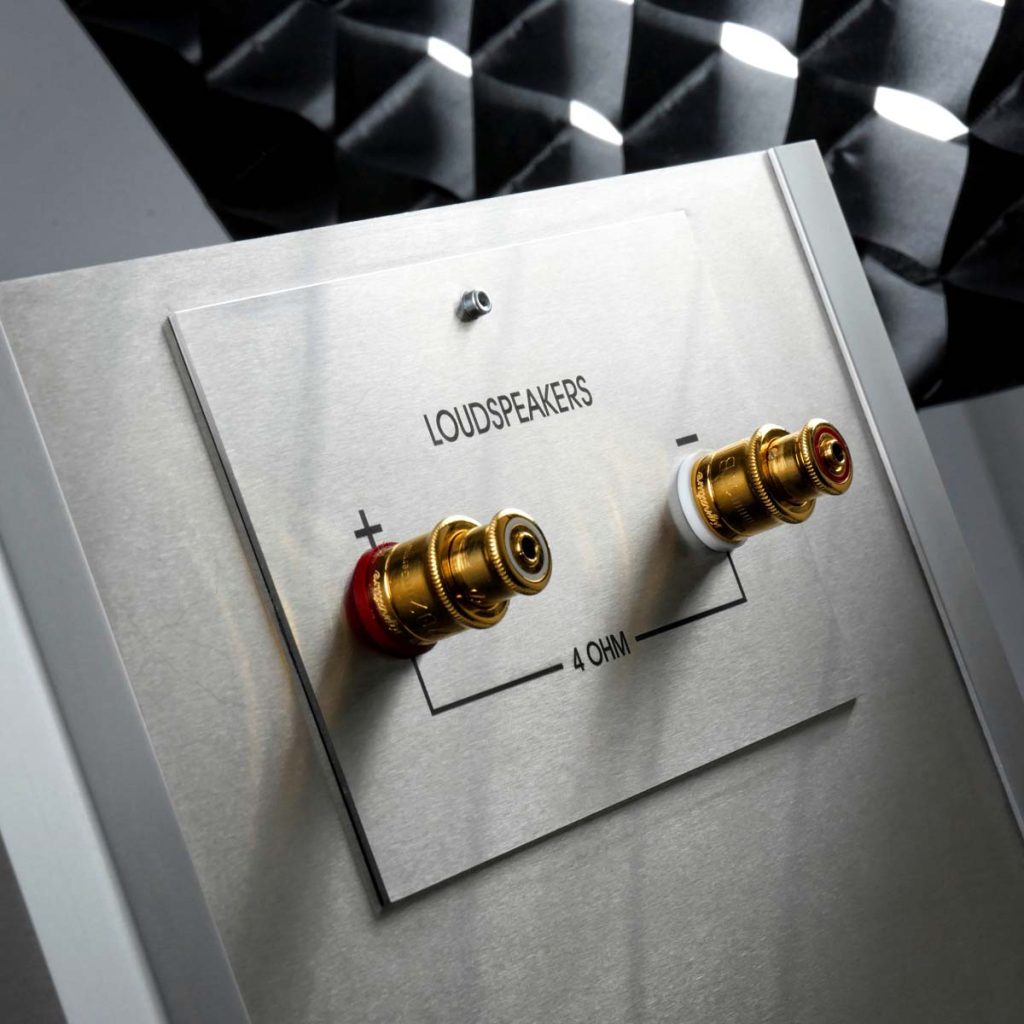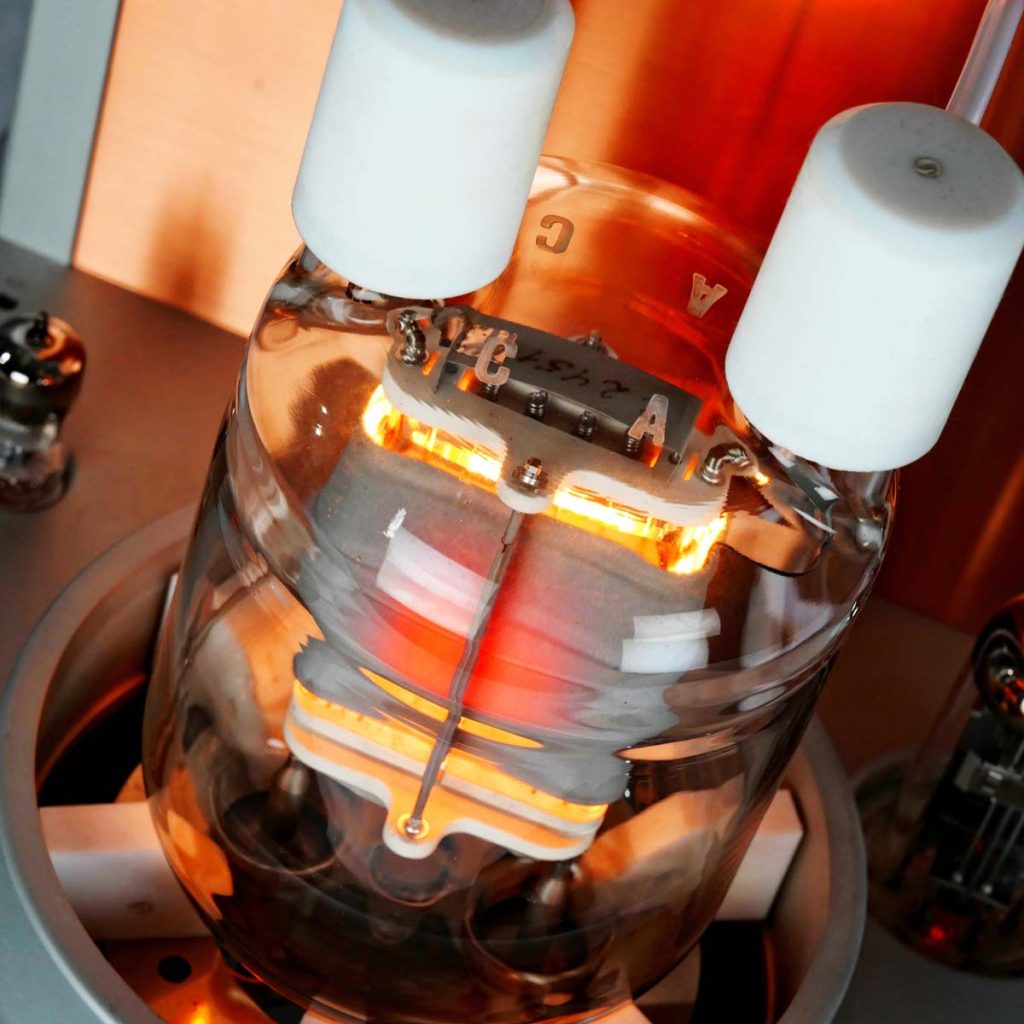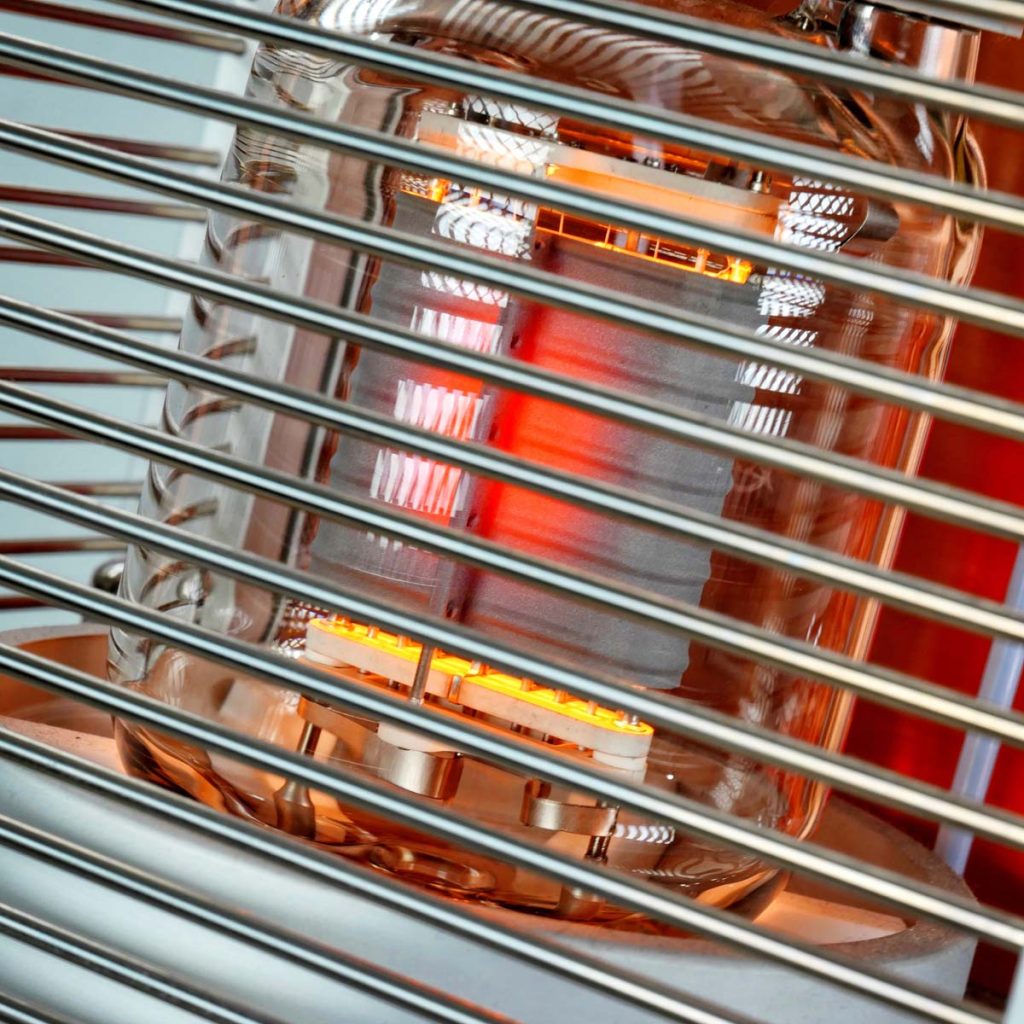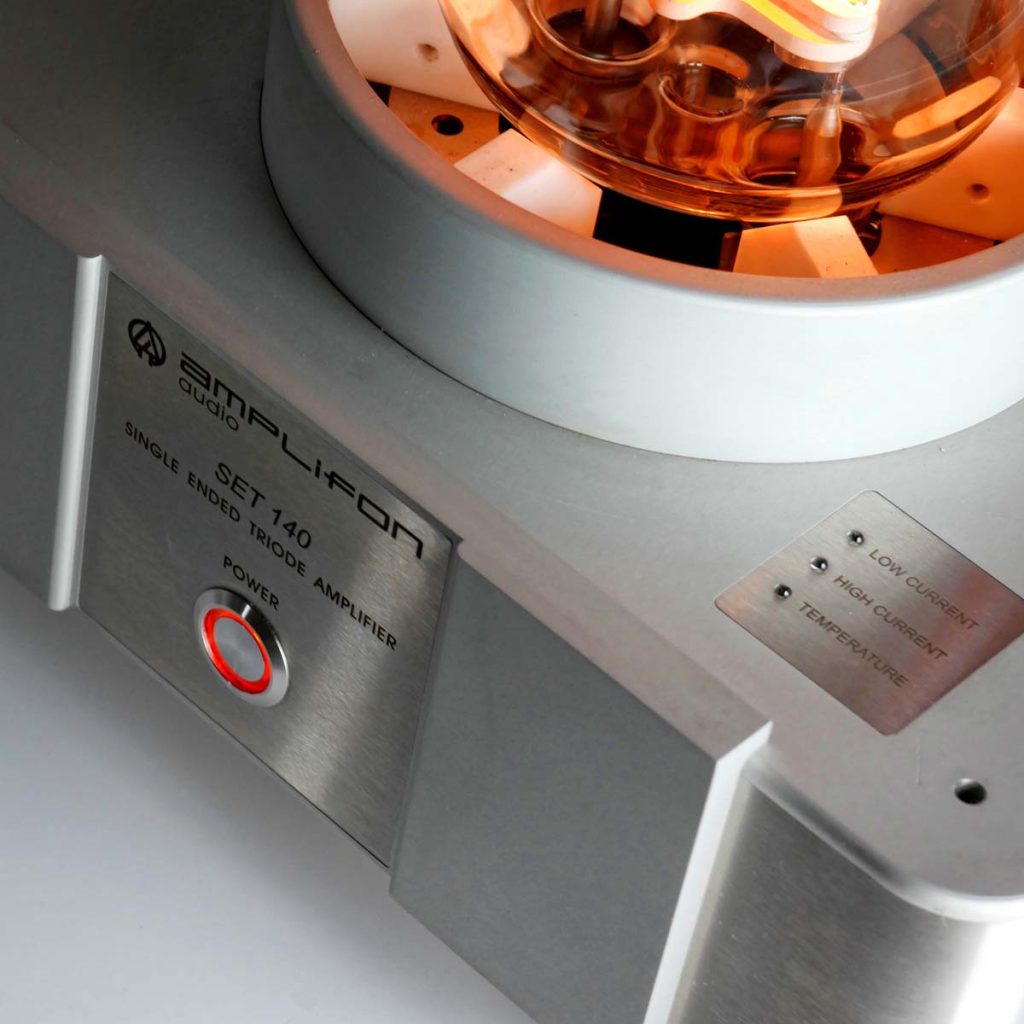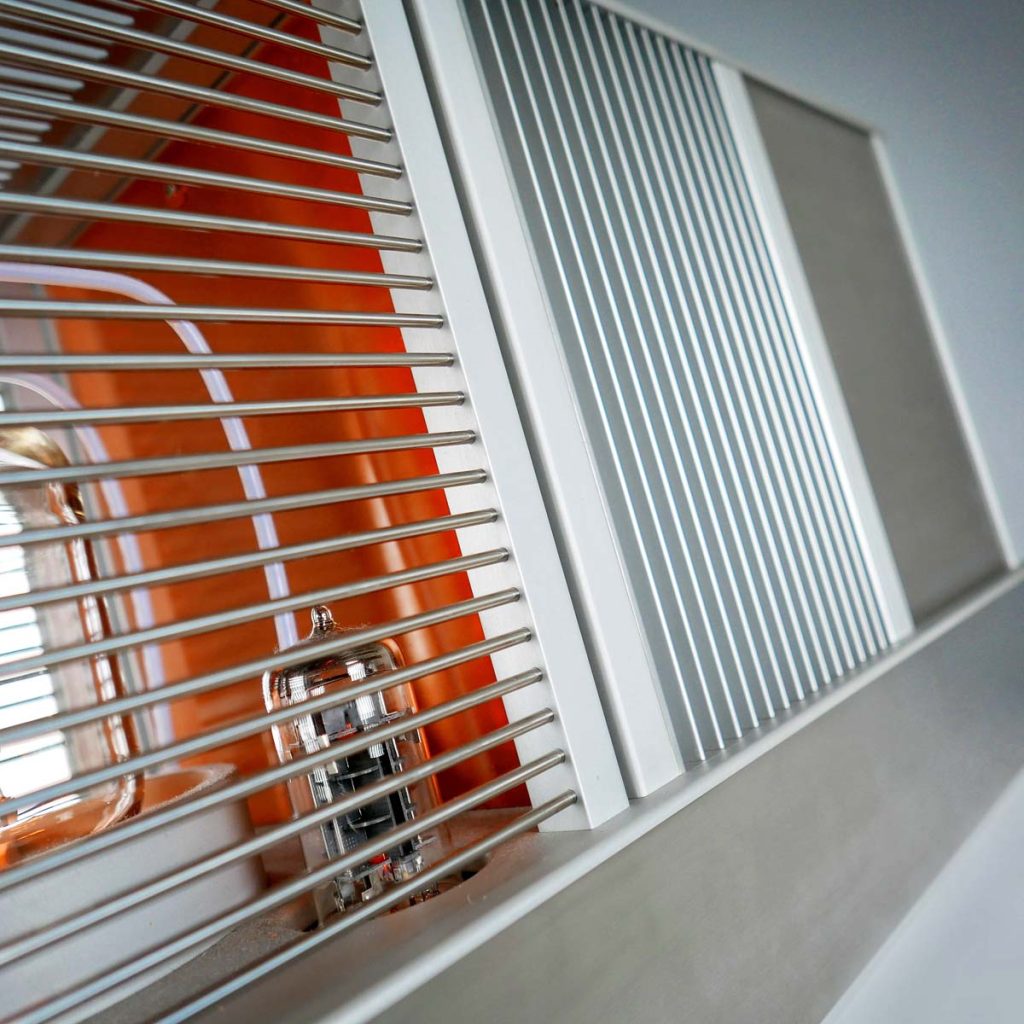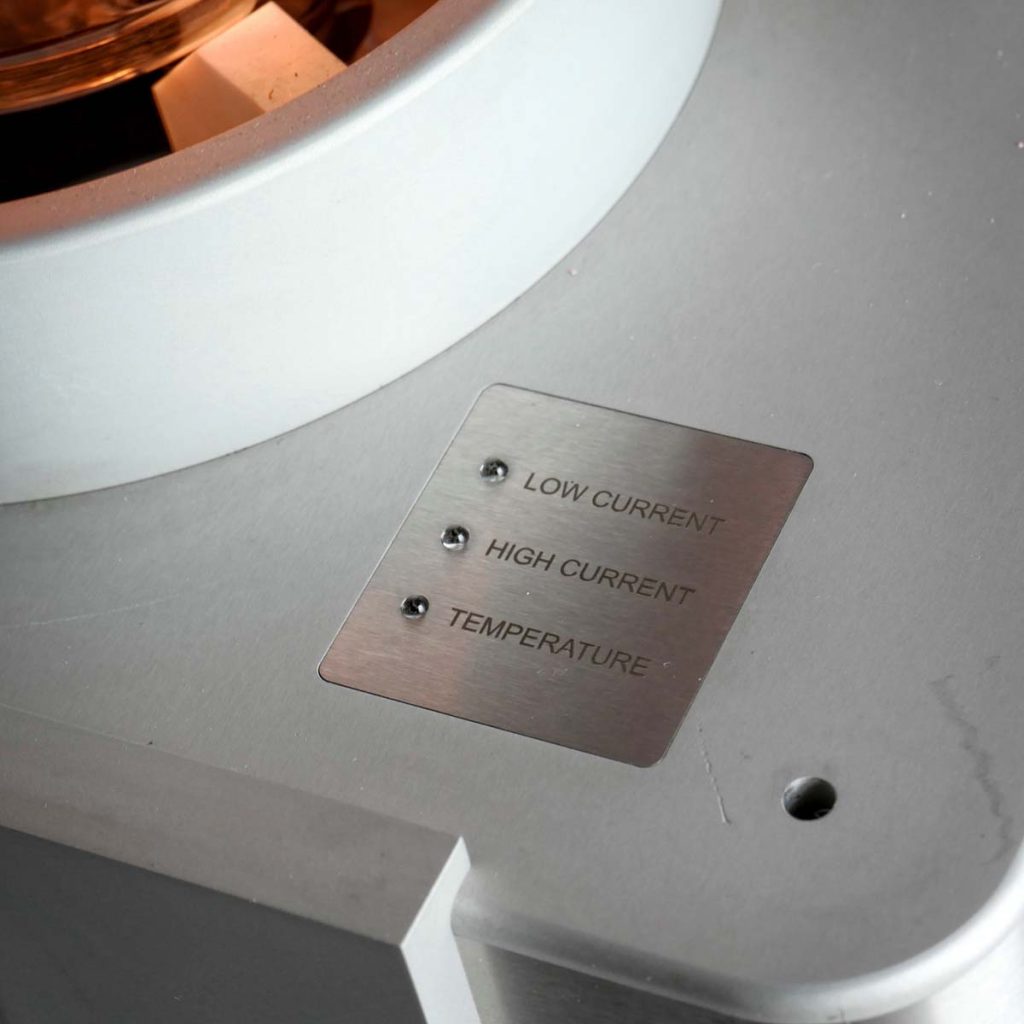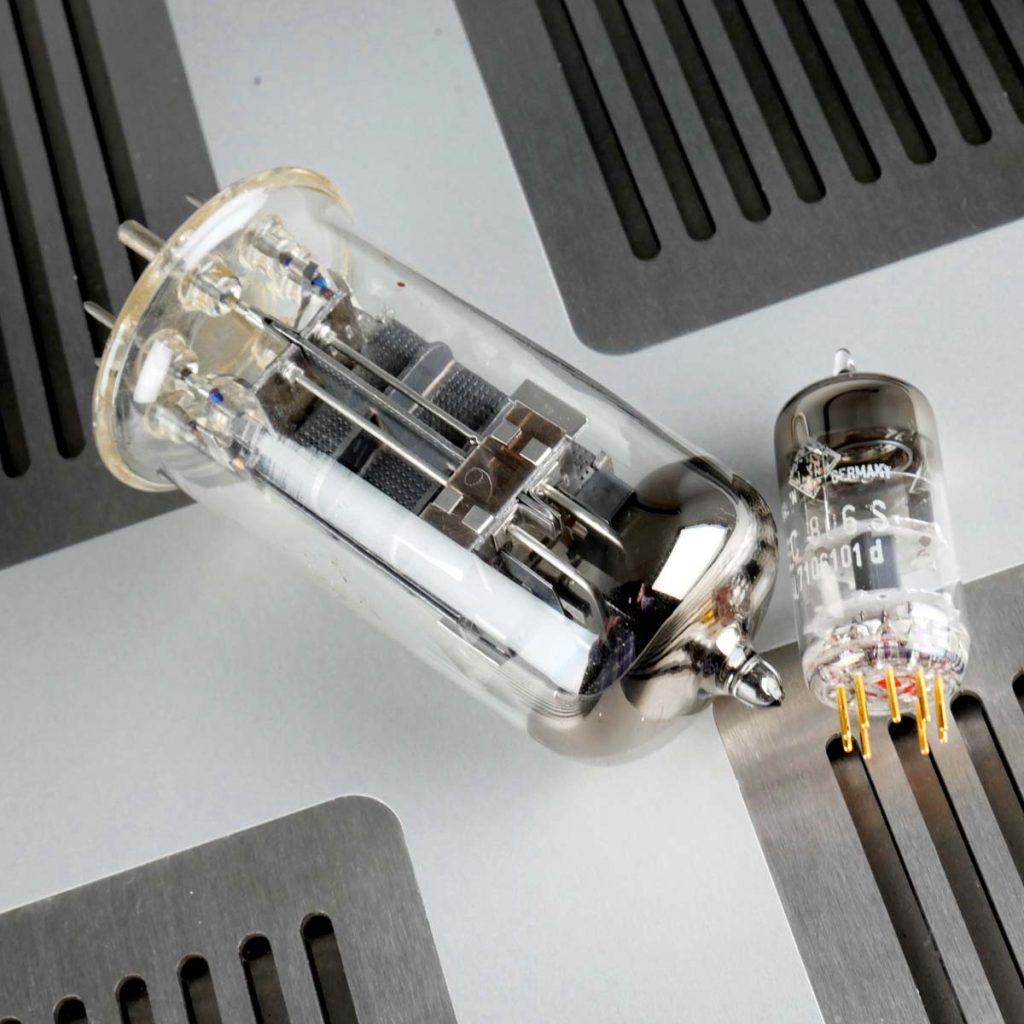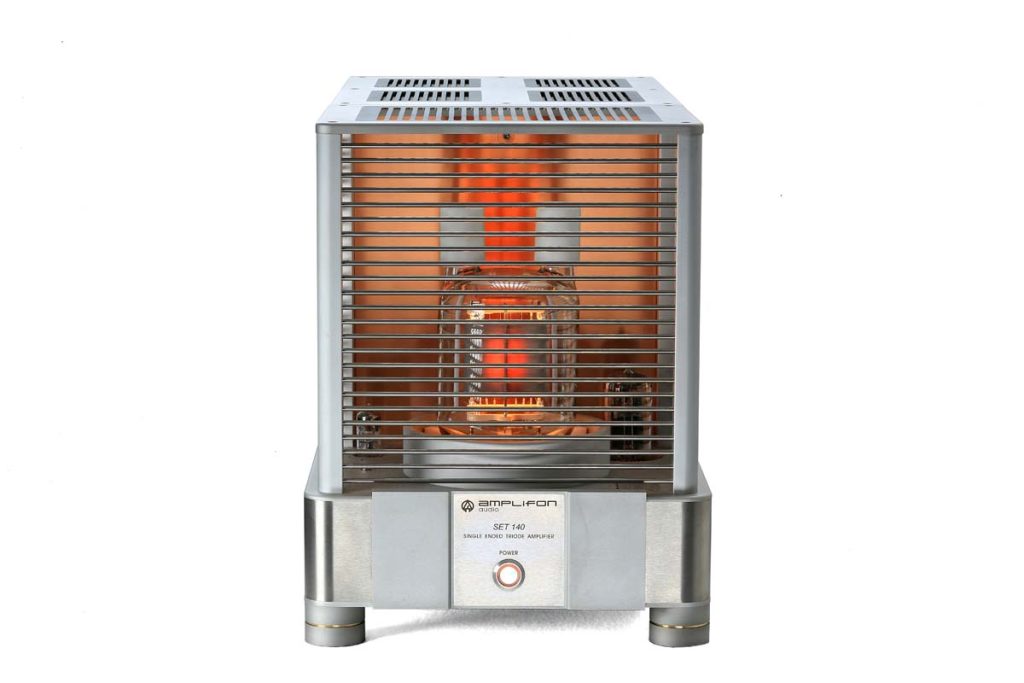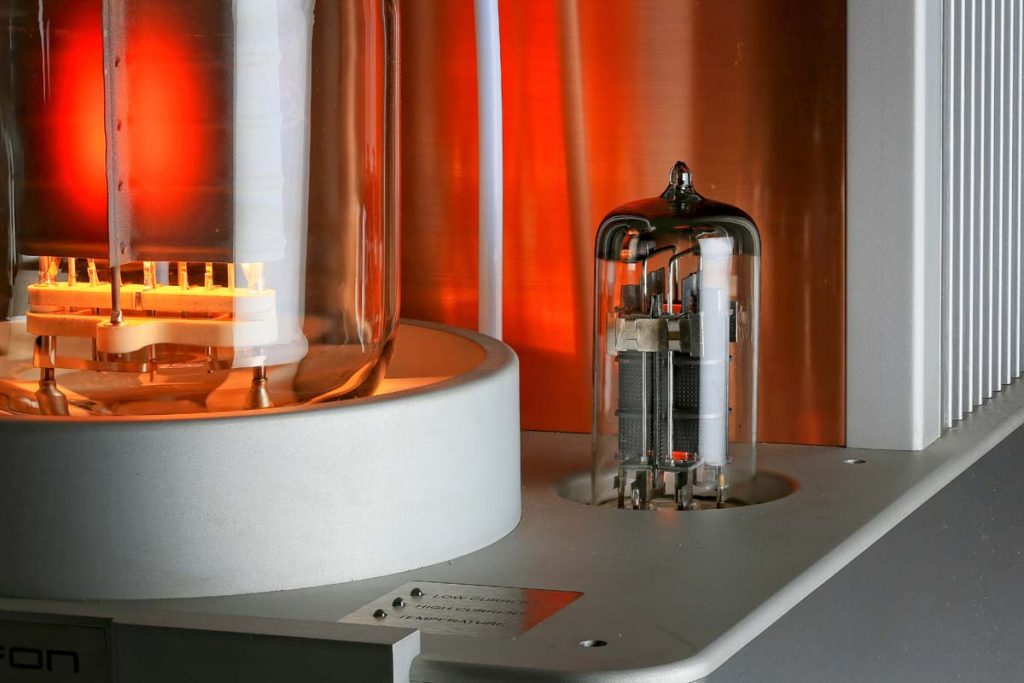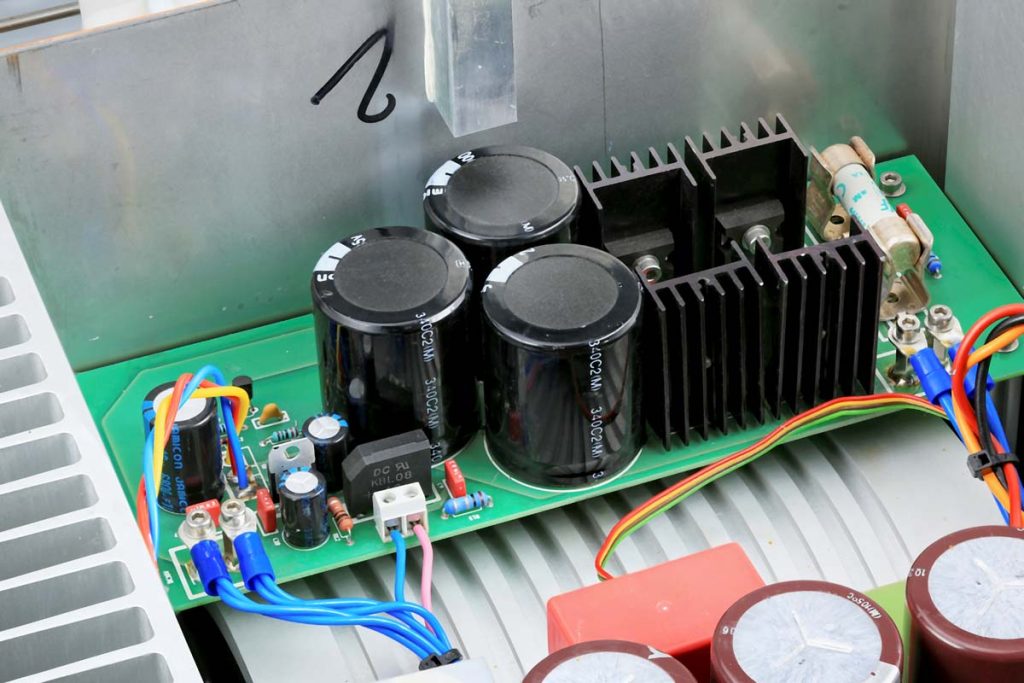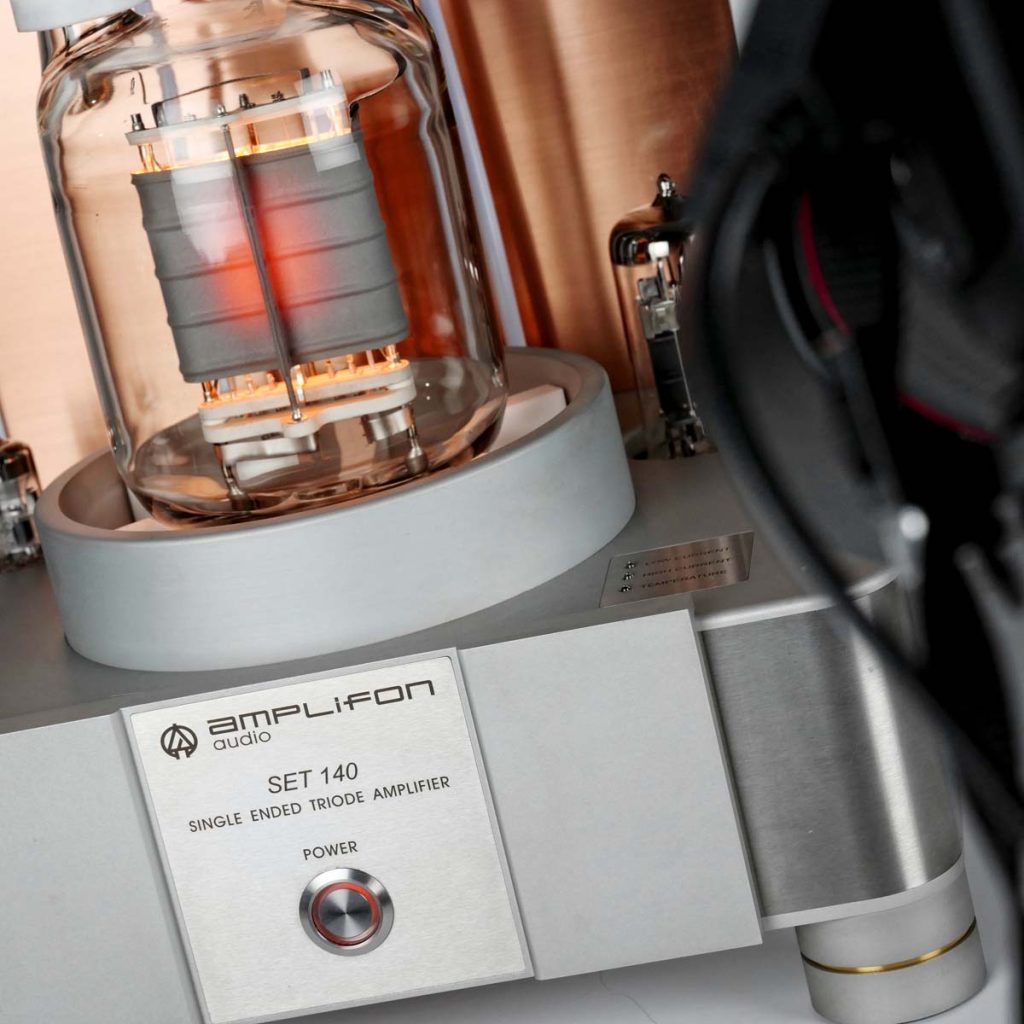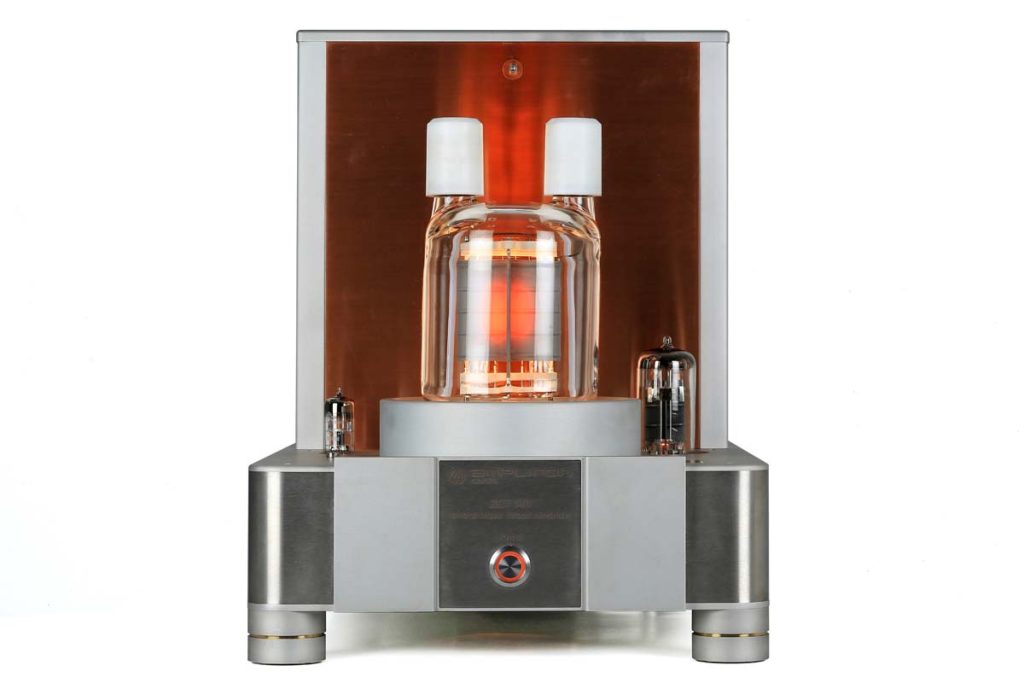R.I.P. High Fidelity
After a long, difficult illness and an unfulfilled existence, high fidelity has passed away peacefully in its sleep. Rather than indulge in an obituary, here are two solid reasons to save our tears.
The end of hi-fi cannot be explained using technical terms. With colors perhaps. Or at most with a poem.
With a weight-to-power ratio of half a kilo per watt, the Amplifon SET 140 tube monos from Poland seem rather dated compared with modern Class D amplifiers, anyway at least on paper. They look like steam engines whose era came to an end when the Iron Curtain started to show its first signs of rusting. After a strenuous day of impressive energy savings at home, the Amplifon’s two imposing type 833A cookie-jar triodes glow brightly like 60-watt bulbs and treat themselves to a rather generous 500-watt draw from the primary power supply. Neither the radiator starting to gurgle nor the gas boiler firing up can stop them now. Running the two SET 140s even during the frostiest nights in Poland could save you 100% of your heating costs and leave any teeth-chattering to poor Mr. Frost locked out in the cold.
Perfect for killing time during that quiet period as each year unfolds into the next, I thought to myself, and all without considering the consequences. You see, two cases each weighing in at 70 kilos, the lion’s share of which is rather unhelpfully concentrated on the rear side, requires special shipping logistics; or, to put it more clearly, needs at least three rather beefy men. The two pint-sized delivery guys learned that all too well after they struggled, drenched in sweat and cursing like mad (and taking a breather in the elevator), to get the two iron blocks up to the fourth floor and onto a flat area in front of the equipment in the listening room. For a 20-square-meter room purposely filled with clutter to achieve optimum damping, this means in the middle of the room. The editorial team hadn’t quite realized just how gigantic these heavyweight amplifiers really were.
The SET 140s are made from 8-millimeter thick CNC-milled aluminum sheets, meaning they are as sturdy as a lion’s cage; Molded sectional pieces strengthen the corners and edges. For the skilled mechanical engineer Andrzej Piwowarczyk, who has been at the helm of his company Amplifon since 1997, the poised, steadfast positioning of the tubes is absolutely crucial to keep microphonics at bay from them. Despite the enormous 140 watts of power, the large 833 transmitting triode only releases 40% of its maximum. For that reason, it’s inserted in a rigid Teflon base the size of a horseshoe. The fact that the ventilation grilles and the tube cage create a wonderful harplike tone when you run your finger across them isn’t relevant to the sound, Piwowarczyk holds. On the rear, the monos are solid but nothing special to look at. They include a pair of gold-plated copper screw terminals that accommodate any type of LS cable in the top third and an equally high-quality RCA jack to the side at the bottom; both are from WBT. The front simply features a stainless-steel push button with a modern LED ring. Although this power button is one of the best on the market, a thick toggle switch or rotary switch might have gone better with the nostalgic glowing tubes.
However, it’s best to be wary of succumbing to cherished clichés. Piwowarczyk is definitely not nostalgic, even if his SET140 power amplifiers can be objectively seen as old hat, even before the digital revolution. Everything implied with the power switch and the uncomplicated, no-frills design is only further confirmed when you take a look at the inner workings. Teflon-copper capacitors from Duelund and VCap are not usually had for special-offer prices, and many consider them unrivaled in terms of sound. Even the tantalum resistors are from the Japanese specialist Shinkoh or Audio Note. Any no-name components were also not the result of any cost-cutting measures. The respectable power transformers have been purchased from the Polish manufacturer Trafber, and the output transformers must be wound in-house. Their quality level is primarily responsible for the resulting sound, says Piwowarczyk. A broadband output transformer for a 50-watt SE amplifier constitutes a complex challenge for any developer; designing and manufacturing a transformer for the triple capacity apparently required a very long development period. It weights 19 kilos, which accounts for the physical imbalance mentioned above, and has its -3 decibel point only at 23 and/or 37,000 hertz. “Speaker impedance” is a foreign concept with no meaning for this repeatedly interconnected, elaborately wound lump of iron. Piwowarczyk points out his objective was to combine the dynamics and stability of the best transistor amplifiers with the charm and melodiousness of a Class A single-ended tube. The SET 140s has come close to this ideal, asserts the modest Polish developer, who is clearly proud of what he has achieved.
Amplifon SET 140 – A Rare Beast
Comparable power amplifiers are also few and far between on the international market. The most legendary examples with 833 triodes are the HE-833 monos from Wavac, which are comparable, for all intents and purposes, with the SET 140s in terms of the specifications sheet. Unfortunately, I have never had the opportunity to hear them. I did, however recently borrow some Silvercore mono power amplifiers, equipment whose absence I still mourn to this day and that were even more reasonably priced than the Amplifon monos. However, they are, except for their identical power tubes, significantly different from the Polish heavyweights. Silvercore’s models use a cool, light power supply and operate with considerably less power. Nevertheless, the tremendously colorful German-made monos will sometimes need to serve as a point of reference as we move forward here. When the SET 140s were delivered in person to the editorial office by Sales Manager Christoph Kaintoch, who has a close personal relationship with Piwowarczyk and was a fan before he entered the profession, the team had been waiting for an LAS 408 with triple low-frequency-supported coaxial chassis to arrive from Live Act Audio. We quickly connected a small Lindemann musicbook 15 DSD behind the T+A MP 3000 HV as the source and gave the tubes a short bit of time to warm up while we got acquainted with the best cables that AudioQuest has to offer.
After that, we listened to some Ray Charles and were very pleased. The impedance-critical LAS 408s followed the SET 140s’ every word as the voices of Gladys Knight and Ray Charles from “Heaven Help Us All” floated freely in the room while the piano belted out a fierce baseline. Essentially, the official test was over at this point. All that’s left to say in conclusion is that the Amplifon SET 140s assert themselves with ease as part of a randomly cobbled-together chain and follow established hi-fi criteria in showcasing their outstanding quality in a favorable orange light. But for me, there was still something missing that’s hard to put into words. In the end, the monos ended up with my Steinmusic loudspeakers, a wide-band full-range driver design. And like a missing link they blended into the mix like an invention that called into question everything that had gone before and revealed completely new features. Compared with the SET 140s, everything I had been playing so far was just hi-fi, a desperate, eternally unfulfilled hobby. They changed everything and nothing at the same time. Nothing, because they didn’t try to impertinently steal the limelight and didn’t come across as vain; rather, they simply wanted to make music — and everything, because this music had never sounded so natural before. In writing this article, it was still easy to pass judgments and say things like “uncompromising in the low bass” or “transparent midrange” and similar drivel. It wasn’t all wrong per se, but to me now it seems strangely irrelevant, and it sounds like the kind of thing you would hear at a hi-fi trade fair or during a comparison test. And that is, during Leonard Cohen’s “You Want It Darker”, embedded in the room like a memorial stone dedicated to the end of the world, infinitely far away.
I’m not thinking about technology but rather whether it was impious to give the old, dying poet such a brutal sound design with profound, abyss-like basses. But I don’t reach a conclusion because the master’s baritone massages my abdominal wall until the soup in my brain overflows and forms little colorful lakes before my eyes. It’s a moment when boundaries dissolve, both in terms of my own self and the whole hi-fi clutter: My pitiful eight-inch full-range drivers cannot, by physical definition, come close to reproducing such awesome orgies of low bass, my outdated DAC is in no shape to sound so transparent, so spacious, and so not artificial. And yet it happens: As I close my eyes, all the technology disappears, and it’s just Leonard Cohen and me and an earthquake simulator in the room. Still digital in CD quality, “Take This Hammer”, a very audiophile live recording of Harry Manx, the Canadian Bollywood Bluesman, is next up. His interpretation of the American workers’ song creeps up on you with soft slide guitar that increasingly brings the instrument’s body into play as a percussion instrument. A harmonica slides into the frame from the left, at first inconspicuously and ostensibly innocently. But that’s where the problems begin: On devices that are too well-behaved, the entire track becomes pretentious and trivial: The chain is too sharp, too harassing; the harmonica is annoying, then, so too, is the hoarse croaking of the singing; until at the end the buzzing of the slide guitar finally concludes the entire song. The air around the steel strings has to bear the gashes inflicted during the duel, the blows to the body must resonate like rolls of thunder, the harmonica must be placed exactly somewhere between bored and overexcited so its melody can develop, and Harry Manx must sing deeply, fully, and dryly, not thinly or aggressively. Just like the Amplifon power amplifiers tackle the challenge. No over-the-top gestures and no gun salutes. The music is simply there. End of discussion.
In direct comparison with the Silvercore power amplifiers, which produce a sound I can still recall in my ears (and will actually never be able to forget), the Amplifons come across as considerably more neutral and less extravagant when dealing with the sweet charm of tube technology. Yet the SET 140s have no ambition to knock analytical semiconductor amplifiers off their perch. Amplifon always has the home-field advantage no matter what system is being used. Where Amplifon rules the roost, other so-called hi-fi amplifiers keep their distance; that is, unless they’re after a bloody nose. In the lower range, only Series 5 monos from Soulution spring to mind as an amplifier that could possibly compare with the SET 140s if suitable speakers were used. The sensual whip-cracking Swiss high-end amplifiers once really impressed me with their vise-like control, but they also at least robbed my speakers of their dignity. In contrast, the Polish firecrackers rely on power instead of torque, and Soulution’s five-digit damping factor speaks volumes compared with the sweet 12 of the SET 140s. Surely there are speakers out there that need this constant disciplining; but in my chain, Amplifon’s confident, energetic hands-off approach is more convincing than the pedantic stop-and-go approach of the dominant Swiss models. The fluid nature of the buildup and tapering off of the 833 monos’ sound comes across as integral and not fragmented. After only a very short period of dutiful evaluation, I constantly sink wholeheartedly into the music; not just with vinyl hit recordings, but, as already indicated with digital tracks, with very normal recordings as well, even historical recordings that are anything but perfect but all the more treasured by me. Despite all the SET 140s’ neutrality, they never come across as apathetic or lifeless. They also seem to find pleasure in the grating sounds of Robert Johnson — this brings us closer together. Their excellent, skillful balance reduces sharpness in the treble range to such an extent that it no longer hurts, underpinning the thin, tinny recording with a warm fundamental tone that I haven’t heard before. Never have I found myself in such an intimate setting standing face to face with the godfather of blues who once sold his soul to the devil. For the first time ever, my ears tell me he did the right thing. I decide to trudge through the Concierto de Aranjuez in the form of a 1976 recording with Ernesto Bitetti on the guitar. A borderline kitsch piece of classical music, if you ask me. I automatically imagine an animated Disney film in which a barefooted rotund-looking guitar is skipping gleefully through a green meadow while the string section tussles in the background with woodwinds. Nevertheless, the concert does gain enormous, dynamic tension and excitement from the interplay between intense full orchestral tutti passages and sections where the flamenco guitar only has mild accompaniment. In the second movement, When the room expands toward the back and the broadly staggered instruments fluidly interlink, the Amplifon monos almost make me forget the artistic irrelevance of the performance. Captivated, I instead follow the rich and spirited melodic twists and turns and marvel at violins that (supposedly) grow out of an oboe like a bouquet of lilies.
In all seriousness, I would advocate replacing ABSOLUTE FIDELITY with the heading “No Words” for components that cannot be covered using the jargon we are accustomed to using to talk about all things hi-fi because a squirt gun is not a captive bolt pistol and a swing carousel is not a high-wire zip line. A “test” is not an adequate way of getting better acquainted with music devices like the SET 140s. Just as there won’t be any earthly reporters around to recount the Apocalypse, the end of hi-fi cannot be explained using technical terms. With colors perhaps. Or at most with a poem.
How An 833 Transmitting Triode Works In An Audio Amplifier
Anyone concerned with the operation of a transmitter tube in a hi-fi power amplifier needs to consider different points than those that concern “normal” tubes.
Gradual heating
It all begins with the heating-up phase. The heating can only be switched on without taking any special measures if the technical specifications do not call for a limit on the starting surge current. If, however, a maximum starting surge current is specified, you need to make sure you switch on the heater voltage gradually. It’s important to always bear in mind that the cold resistance of the heater filament totals only 10% of the heat resistance and the time constant of the heating lies in the region of a few seconds. For the 833, which has heat values of 10 volts and 10 amperes in operation, this means some 100 amperes flow briefly during heating. The advantage of 833 operation compared with that of comparable transmitter tubes is that all voltages (heating, anode, and grid) can be generated at the same time as this tube has a thoriated tungsten cathode. With tubes that have oxide-coated cathodes, the anode and screen-grid voltages should not be generated until after a specified heat-up period, otherwise there’s a danger the cathode layer could dissipate.
Extremely sensitive: the 833’s cathode
However, there are still important points to note with the 833’s cathode: The specified nominal value of the heater voltage needs to be kept constant at ±5%. In the process, you need to ensure, in particular, that the heater connections are kept absolutely clean. It’s a good idea to monitor the connections after a certain length of time in operation to ensure the contact surfaces are not oxidized. An oxide layer means greater contact resistance and therefore insufficient heating of the tube. That usually becomes noticeable when the tube is distinctly “darker.”
Insufficient heating reduces the cathode’s emission. When fully utilizing the emission, insufficient heating of 5% can lead to a loss in amplifier power of up to 15%. If, however, the cathode is only conservatively utilized (limited anode current resulting in less delivered power), then insufficient heating is not critical. In the case of prolonged insufficient heating of more than 5%, the 833’s service life will be cut approximately in half. Setting the heating as accurately as possible at operating temperature therefore ensures a long service life and good data for the power amplifier. In practice, unavoidable variations in the supply voltage and the switching elements in the device must of course be taken into consideration.
Glowing red: the graphite anode
The tube’s anode is made of graphite since it has been designed to withstand very tough operation as a transmitter tube under conditions just below the maximum ratings. The advantage compared with a normal anode plate is thermal stability. An anode plate heated up to glowing red would warp and the tube’s technical data (in this case the transconductance and therefore the amplification) would change. Another advantage this material offers is that it helps maintain the vacuum in the tube: The graphite is coated with zirconium and, when glowing, binds residual air molecules.
The grid
The control grid is also particularly stable mechanically as a non-negligible grid current flows here during transmission operations. However, in a hi-fi amplifier, this is not important.
In conclusion:
The 833 is a very high-performance tube that is highly suitable for use as an audio tube. As long as you pay a lot of attention to the heating, you can have fun with it for a long time.
Erich Engel
Tube mono power amplifier
Amplifon SET 140
Functional principle: Class A single-ended tube power amplifier | Output power: 140 W (4/8 Ω) | Tubes: EC86 (input),6C41C (driver), 833 (power) | Frequency range: 23–37,000 Hz (-3 dB/130 W) | Distortion factor: < 0.2% (10 W/1 kHz) | Input impedance: 120 kΩ | Output impedance: 4 and 8 Ω | Power consumption: about 500 W | Dimensions (W/H/D): 31/41/69 cm | Weight: 70 kg | Warranty period: 2 years | Price for a pair: €50,000
BeataMusica
Cranachweg 2
55127 Mainz
Germany
Phone: +49 61 31 30 76 888
Accompanying Equipment
Turntable: Feickert Analogue Firebird | Tonearms: Genuin Audio Point, Brinkmann 12.1 | Pickups: Ortofon Quintet Bronze and 2M Black, Audio-Technica 50ANV and 33PTG I, Clearaudio DaVinci, Lyra Kleos SL | CD player: Revox C 221 | Digital-to-analog converter: PS Audio Digital Link III | Preamp: MFE Tube One SE (including phono) | Power amp: DNM PA3S | Integrated amp: Genuin Straight | Speakers: Steinmusic Masterclass SP 1.1 | Cables: Analysis Plus, Musical Wire, Audiophil | Accessories: Feickert-Analogue, Subbase Audio, Steinmusic, Audiophil

